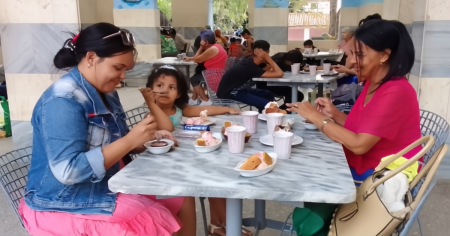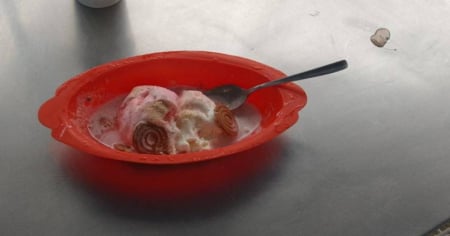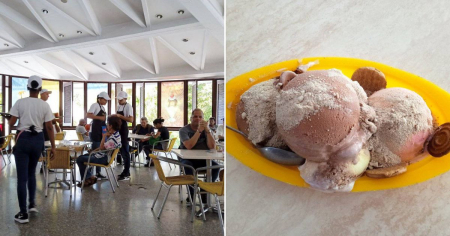The iconic ice cream parlor Coppelia, in Havana, faced criticism in a recent report by state journalist Mario Herrera from Canal Habana, who attempted to document the current state of the service but was prohibited from filming inside the establishment.
"Last Friday, I was not allowed to film inside. It seems that in the era of smartphones and social media complaints, the cameras of state channels require permits, which are granted, but with prior notice," commented Herrera during his television appearance.
The reporter nostalgically recalled the golden era of Coppelia in the 80s and 90s: “I went many times as a child in the 80s, when they provided excellent service like their ice cream from morning until two in the morning. In the 90s, things changed, but it remained vibrant, against all odds, despite the shortages.”
After its renovation and reopening in February of this year, Herrera hoped for an improvement in service, but his impressions were different. “I thought there would be some positive change; however, my colleague Ricardo Gómez raised an alarm on his social media with a photo from his phone about a regression in service so shortly after the reopening. Wanting to verify it without anyone expecting me was the goal that I couldn't achieve," he stated.
Regarding the product offering, the journalist stated: “I won’t speak about the variety of flavors, as the boards displayed a minimum of five, which is quite good in today’s times, and that variable depends on supplies and productions that do not originate from this facility.” However, he lamented that issues with the quality of the ice cream and the service persist: “Hollow ice cream is not a new issue, unfortunately. There are problems that have taken deep root and have causes that go beyond who is serving it.”
Herrera's words add to the previous criticisms regarding the situation at Coppelia following its reopening.
Days earlier, journalist Ricardo Gómez reported on his Facebook profile the poor quality of the ice cream and the reduction in portion sizes compared to the first day of service. “Just a month after the reopening, Coppelia's service regression is evident. The salad on the right was what I was served on the opening day, February 5th. It was very good, I remarked then. The one on the left is what I returned today—without syrup or cookie crumbs, and most regrettably, only the scoop of ice cream on top was full; the ones below had less than a third of the content they were supposed to have. The price is the same as before,” he wrote.

Since the first day after its reopening, the ice cream shop had generated mixed opinions. The announcer Laritza Camacho visited Coppelia and shared her impression on social media: “If you thought Coppelia was bad, you can keep thinking that. If you believed Coppelia was good, you can continue to believe it.” In her account, she emphasized that the ice cream shop still had structural issues and that, despite signs announcing multiple offers, only two flavors of ice cream were available.
Before these testimonies, another customer had reported issues with hygiene and customer service at Coppelia. In a Facebook post, a user stated that they found a hair in their ice cream and that they were mistreated by the staff. The reopening of the ice cream parlor in February had generated expectations after three months of renovation, during which the Ministry of Interior Trade (MINCIN) promised improvements in infrastructure and the introduction of new electronic payment methods. However, complaints about service quality, lack of supplies, and high prices have persisted since then.
When Coppelia reopened, its prices surprised customers. Ice cream now costs 25 pesos per scoop, and a mixed salad reached 155 pesos. Additionally, the sale was restricted to two specialties per person, a measure that generated discontent among consumers. At that time, the state media highlighted that the ice cream parlor would offer a greater variety of specialties and digital payment options, but reality has shown that the availability of flavors remains limited and that criticism of the service has been increasing.
Filed under:





